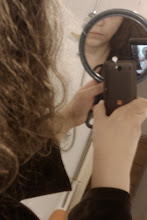I haven't posted in a few days due to a family emergency that is resolving itself, but still took a lot out of us.
Amid all the rushing around, I found a new thing to add to my list of a few of my favourite things. It's not new to many people. It's been popular here for a few years, and it's been a traditional drink in Africa since long before the Afrikaners gave it its name , but I had not tried rooibos (Afrikaners for red bush) tea until a few nights ago. I was expecting it to taste like a strong herb drink, or perhaps very close to black tea, but it really has a nice floral, slightly medicinal taste. Some people think it tastes nutty, but I didn't really pick that up. Of course, the devoted tea drinkers in our family dislike it. It's close enough to a traditional tea to taste odd to them.
After my first few sips, I thought I had found the answer to my "tea drinking problem". The water here is very hard and can smell funny. I still drink a lot of water, but I can understand why I am the only one that drinks much of it straight from the tap. Yet, I am not a big tea drinker. I am really sensitive to tannins (I can't drink most red wines without having strong stomach pains). Once in a while I will have a cup of Darjeeling, green, or white tea. I just am not that into it. I love my coffee, but I cannot replace water with coffee. Buying bottled water is really out of the question.
So, trying not to get my hopes up too much, I looked into what could be the effects of drinking a lot of rooibos. I stumbled upon a very interesting story to a pretty amazing plant.
The Cederberg Mountains aren't hospitable to most plants. It's dry, the soil is poor, and it's hot in the summer. The rooibos plant (a type of legume) thrives here, due in part to its extremely long taproot. However, it seems that rooibos is perfectly adapted to this region, because all attempts to cultivate this plant outside this region have failed.
The Khoisan drank a tea from the needles of the rooibos plant, and when the Dutch settled in the area, they adopted this infusion to avoid the high price of imported black tea. However, its use wasn't very widespread until a Russian immigrant named Benjamin Ginsberg decided to try to market the drink more widely in the region. This eventually lead to the Eleven O'Clock brand of red bush tea.
During his attempts to cultivate the plant, Ginsberg inadvertently lead to the reduction in the size of the seed of the plant, making it very difficult find seeds to replant the crops. The price soon soared to over £80 for a pound of the sand-like seeds. One woman seemed to consistently deliver large quantities of the seeds, and Ginsberg finally convinced her to reveal her source. She had found that ants would take the seeds to their nests, and by breaking into these nests, she could find large quantities of seeds in one place. The seeds are now collected through a mechanical process.
Rooibos has been used in South Africa to treat skin conditions, allergies, colic, and asthma. Due to its high anti-oxidant content, it may be shown to help slow or stop cancer growth. There's a whole laundry list of diseases that may be treated with this plant (depression, headaches, insomnia, urinary system problems, stomach spasms), and as of yet, no adverse effects have been shown.
If you're really used to and attached to black tea, this tea might be a bit hard to adapt to having as a replacement. In South Africa, it's prepared with milk and sweetener (and that's how I make it), but in other parts of the world, it's usually consumed black and with or without sweetener. It has a natural sweetness that might be enough for some people. Overall, I find it to be a nice, comforting drink, and I urge you to give it a try.
Subscribe to:
Post Comments (Atom)



No comments:
Post a Comment